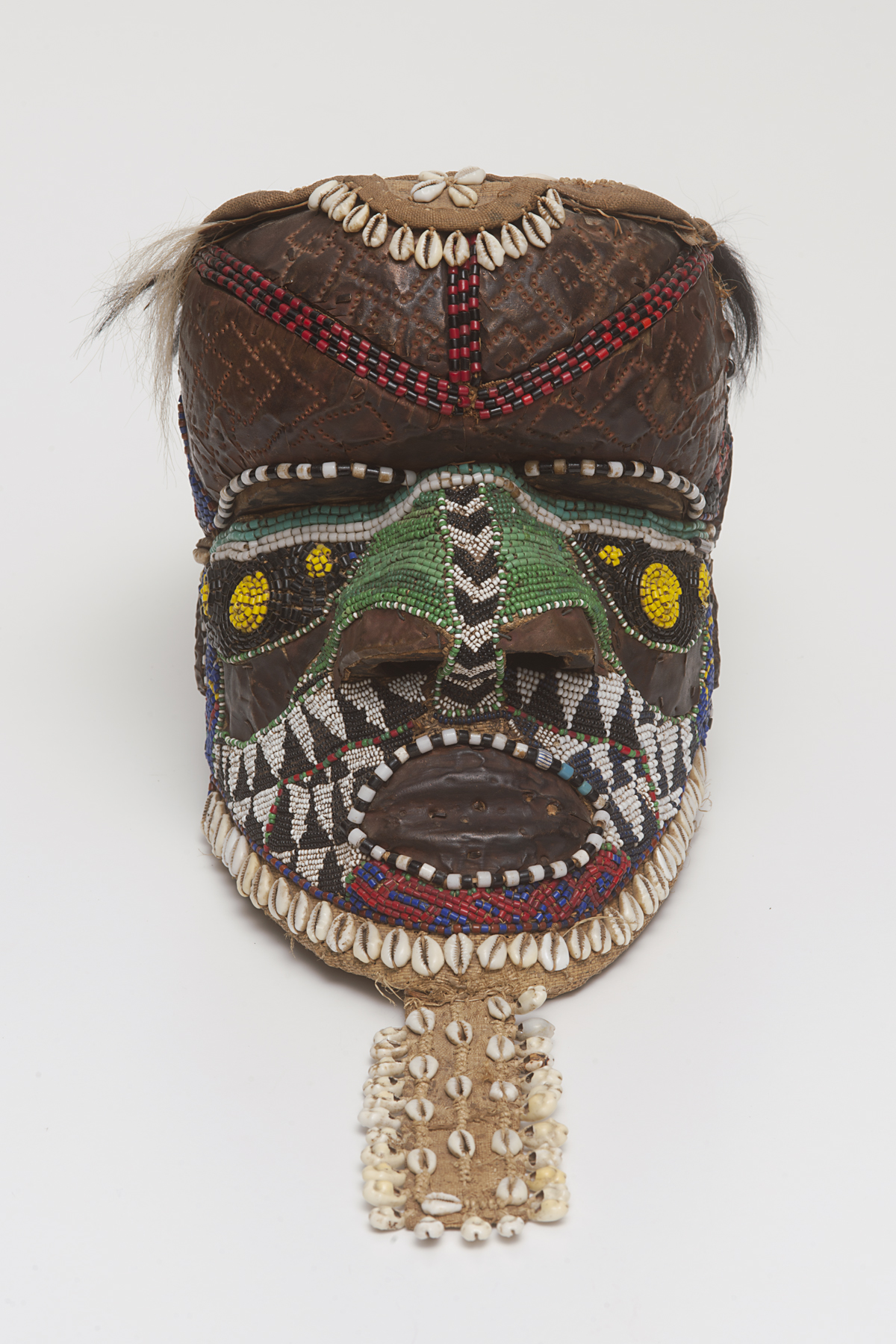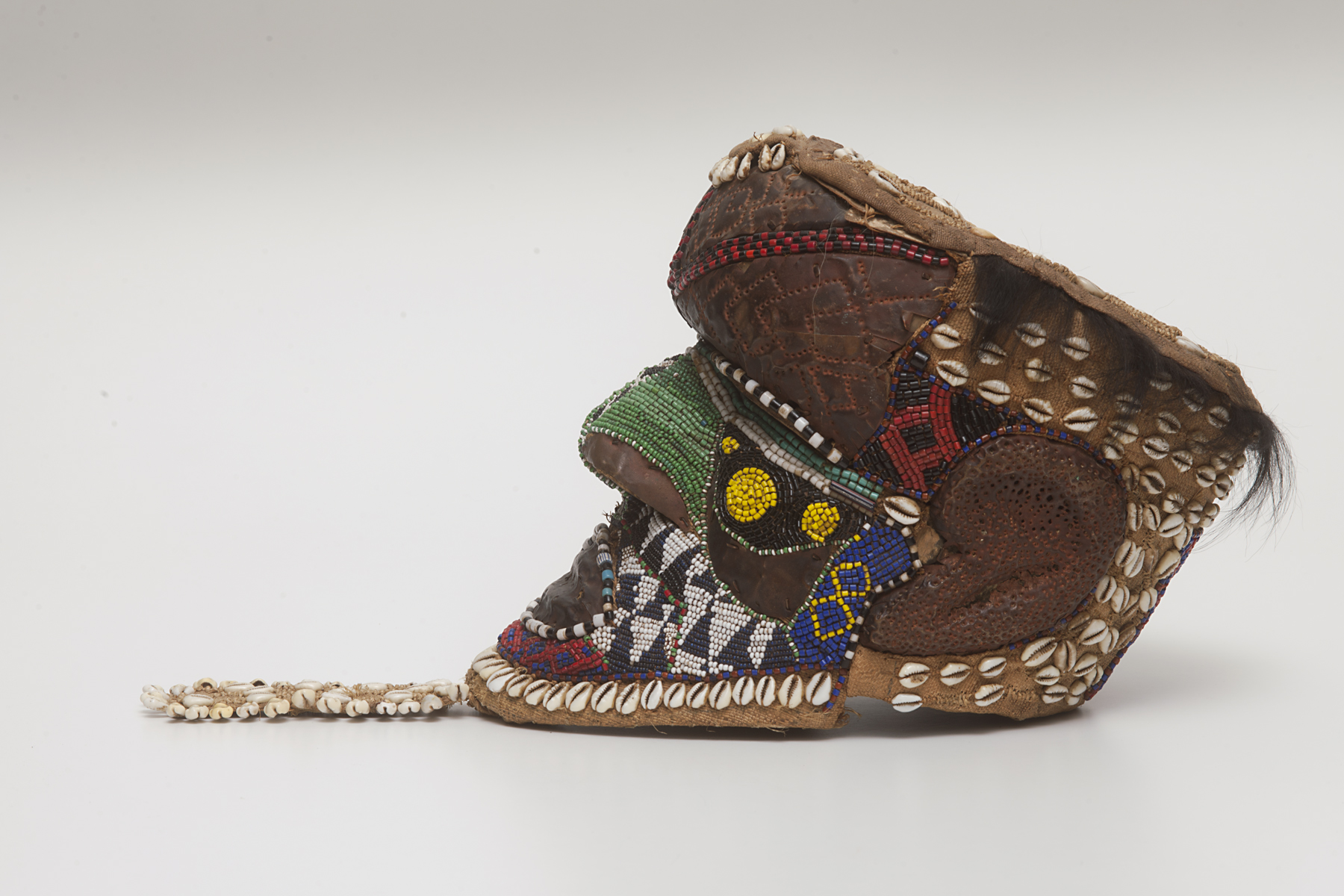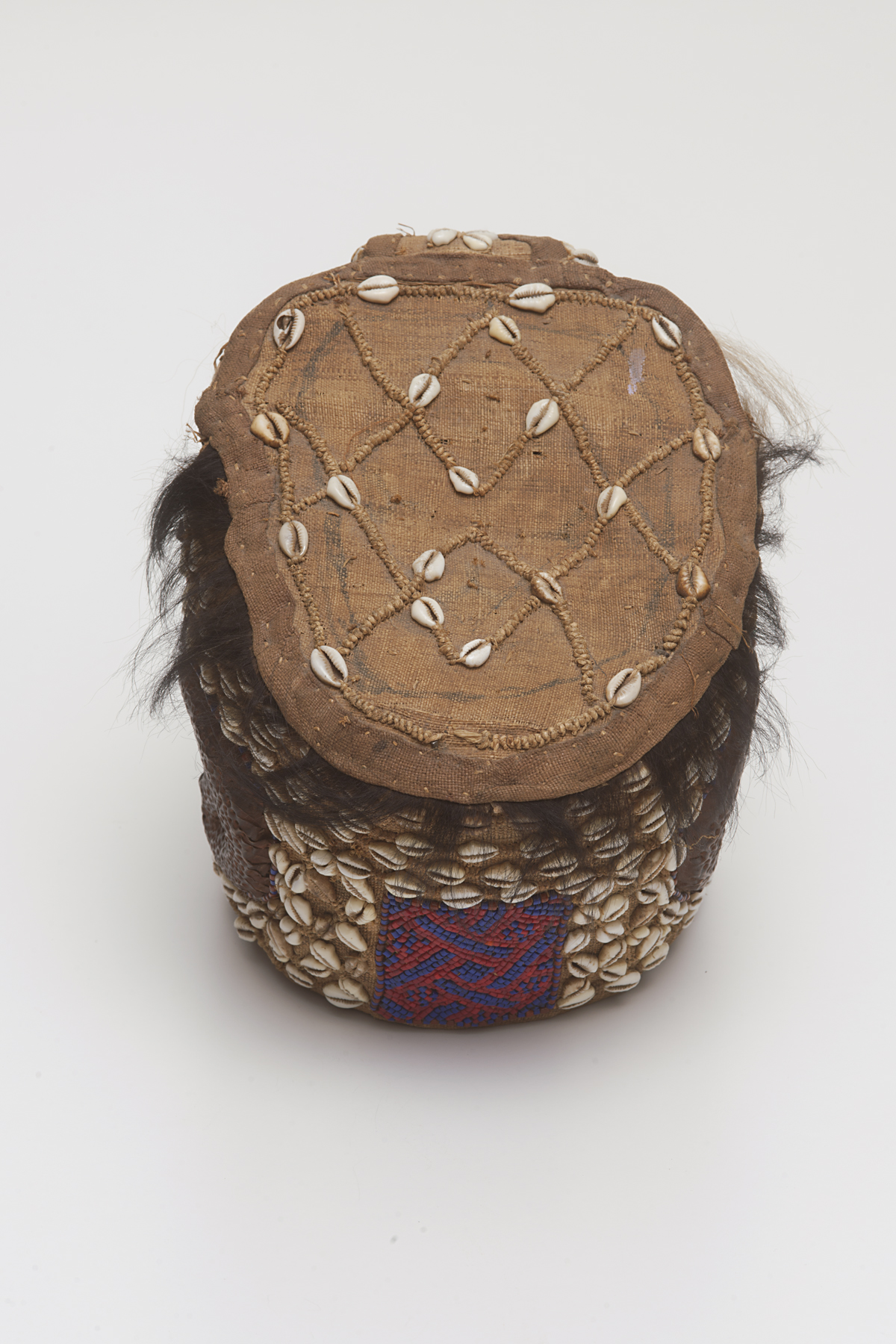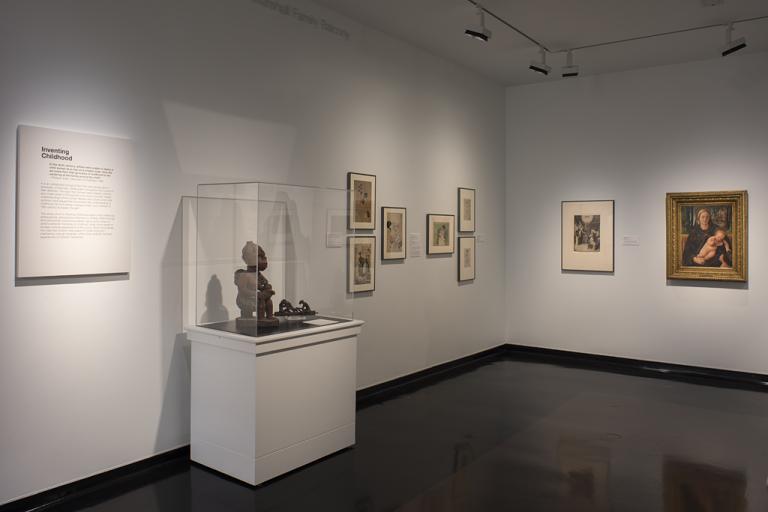Bwoom mask, unrecorded Kuba artist
Artwork Overview
unrecorded Kuba artist, artist
Bwoom mask,
1900s
Where object was made: Zaire (present-day Democratic Republic of the Congo)
Material/technique: beading; wood; carving; goat hair; cowrie shell; stamping; raffia cloth; metal; plant fiber
Dimensions:
Object Height/Width/Depth (Height x Width x Depth): 49 x 24 x 29 cm height includes beard flap
Object Height/Width/Depth (Height x Width x Depth): 19 5/16 x 9 7/16 x 11 7/16 in
Object Height/Width/Depth (Height x Width x Depth): 49 x 24 x 29 cm height includes beard flap
Object Height/Width/Depth (Height x Width x Depth): 19 5/16 x 9 7/16 x 11 7/16 in
Credit line: Gift of Jill Zinn
Accession number: 2007.2959
Not on display
If you wish to reproduce this image, please submit an image request





